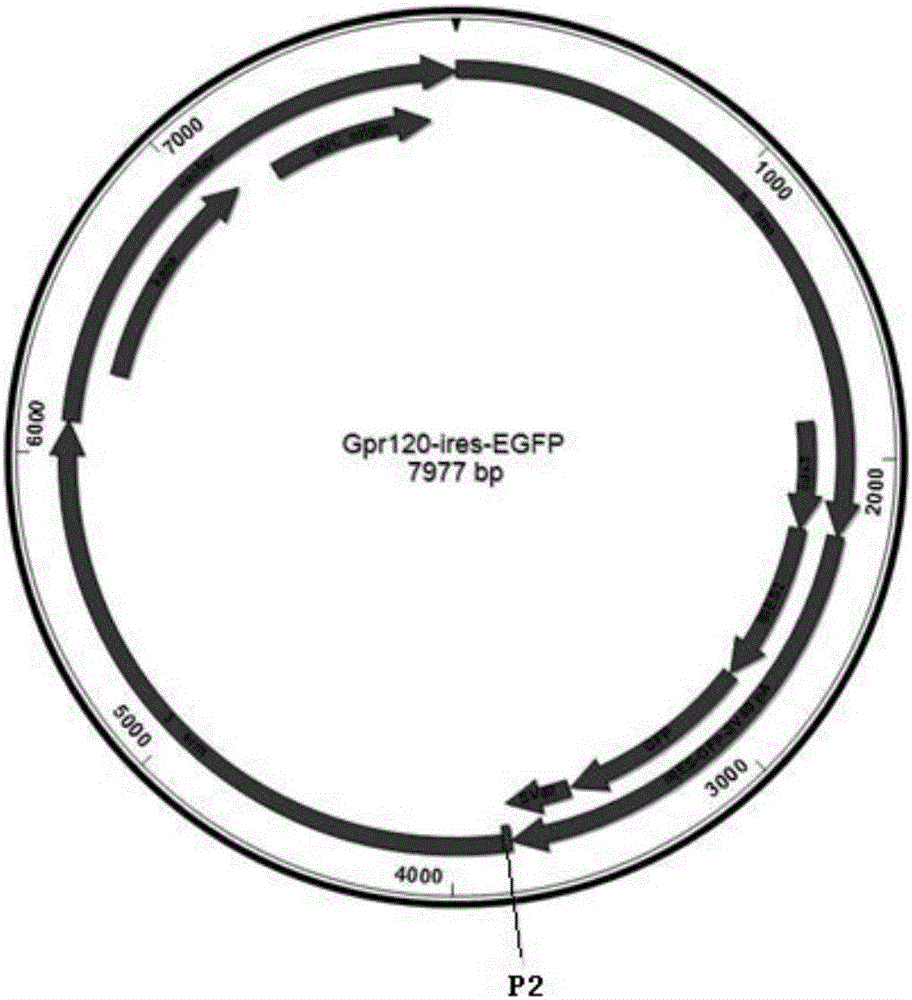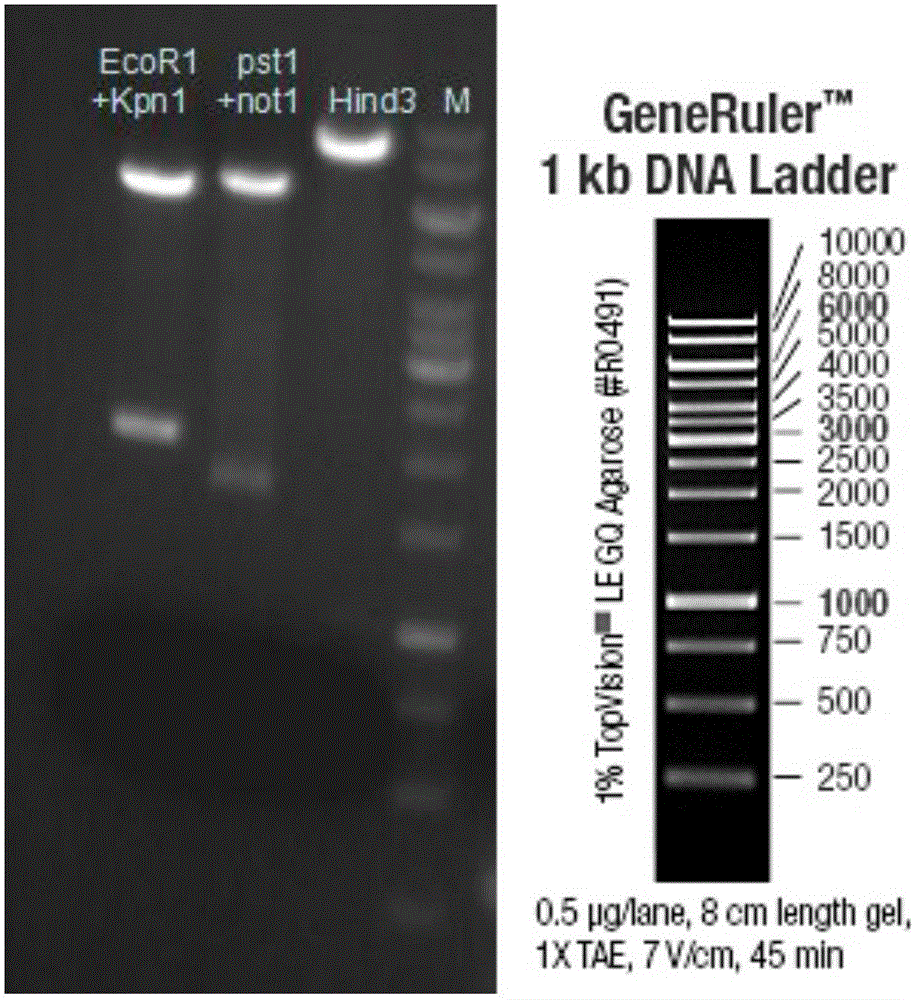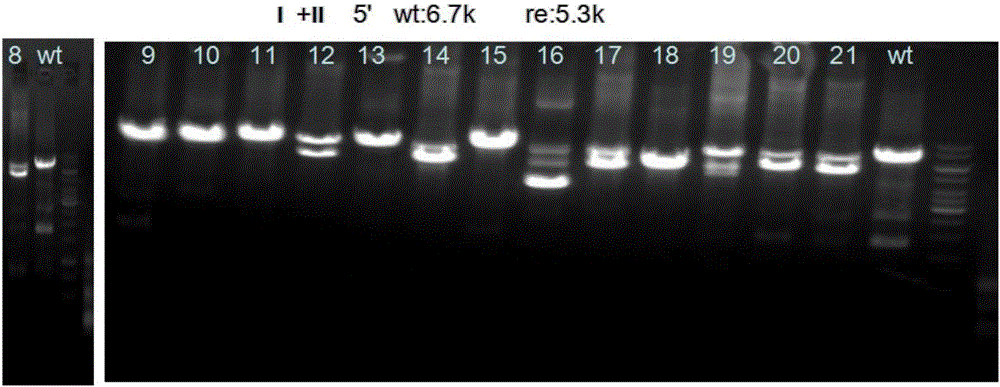Mouse model construction method of eGFP-labeled GPR120 positive cells
A positive cell and mouse model technology, applied in the field of transgenics, can solve the problems of large changes in the success rate of labeling, high antibody consumption costs, false positive labeling, etc., and achieve the effect that the function and metabolic process will not be affected
- Summary
- Abstract
- Description
- Claims
- Application Information
AI Technical Summary
Problems solved by technology
Method used
Image
Examples
Embodiment Construction
[0065] The present invention will be described in detail below in conjunction with the accompanying drawings and specific embodiments.
[0066] The method for constructing a mouse model of eGFP-labeled GPR120-positive cells of the present invention uses CRISPR technology to insert the IRES-EGFP-pA expression unit at the stop codon of the GPR120 gene coding frame. Find the target sequence near the stop codon of the target gene, design the guide-RNA for this site, transcribe the active guide-RNA into mRNA in vitro, and inject the guide-RNA mRNA and IRES-EGFP- The donor DNA fragment of the pA unit was injected into fertilized eggs, and the positive mice with successful site-specific insertion were screened from the offspring. This method can specifically express eGFP in GPR120 positive cells of positive mice.
[0067] The upstream and downstream sequence information of the gene knock-in site is as follows:
[0068] cttttcttctgggtggtggccttcacgtttgccaactctgccctaaaccccatactgtacaac...
PUM
 Login to View More
Login to View More Abstract
Description
Claims
Application Information
 Login to View More
Login to View More - R&D
- Intellectual Property
- Life Sciences
- Materials
- Tech Scout
- Unparalleled Data Quality
- Higher Quality Content
- 60% Fewer Hallucinations
Browse by: Latest US Patents, China's latest patents, Technical Efficacy Thesaurus, Application Domain, Technology Topic, Popular Technical Reports.
© 2025 PatSnap. All rights reserved.Legal|Privacy policy|Modern Slavery Act Transparency Statement|Sitemap|About US| Contact US: help@patsnap.com



